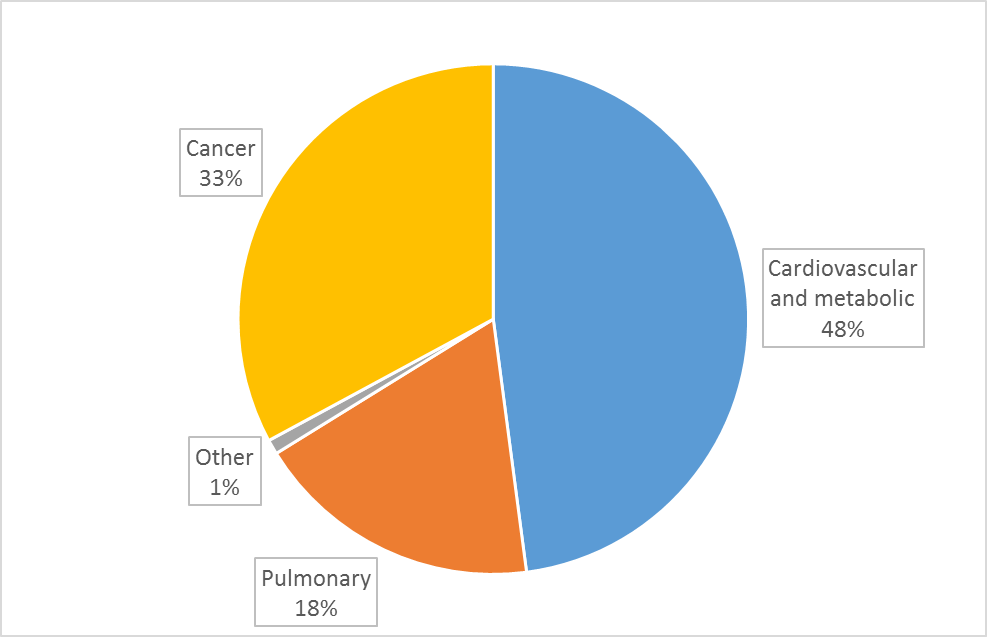August 5, 2017
Stanton A. Glantz, PhD
E-cigarettes and cancer: If you ask the wrong question you get the wrong answer
A new paper, “Comparing the cancer potencies of emissions from vapourised nicotine products including e-cigarettes with those of tobacco smoke,” just published in Tobacco Control, adds to the already-convincing literature that e-cigarettes expose users to much lower levels of carcinogens than conventional cigarettes do.
This analysis ignores the fact that cancer “only” accounts for about 1/3 of the tobacco-induced deaths. (See chart based on data in the 2014 Surgeon General Report.) Most are from cardiovascular and metabolic disease and non-cancer pulmonary disease. The evidence to date suggests that e-cigarettes pose substantial risks for these outcomes, particularly because of the ultrafine particles they deliver.
The important question that needs attention is how big these risks are, not continuing to re-prove that they are les carcinogenic than cigarettes.
Any consideration of the risks of e-cigarette use also need to consider population effects, particularly the fact that they expand the nicotine market by attracting kids and depress quitting among adult smokers.


Comments
Cancer and relative risk
The real issue, as you point out in this post, is that safer does not equal safe. No amount of data on safer justifies delay in protection of young people from marketing and new addiction to a harmful product, regardless of whether it's a little safer for some, not all, outcomes.
So it's OK to ignore 33% of
So it's OK to ignore 33% of the deaths related to cigarettes? That's a new idea. Would you like to expand on that? Would you also please expand on your comment regarding the increase in the nicotine market in light of recent statistics that show a decline in use of both cigarettes and vapor products in youth? One final question about your comments. Is there a qualitative difference between the ultrafine particles in burning tobacco and vaporizing e-liquid? If so how does this affect disease risk associated with these particles?
This study did focus on
This study did focus on cancer, but other studies also show that smoking related diseaes do not occur when vaping. This shouldn't surprise anybody, since vapor isn't smoke. I guess your comment on this study originates in your perception that vaping should be banned like smoking and no smoker should be allowed an alternative which is using ingredients we all consume every day, for many decades. Food aroma's, glycerine, etc. That nicotine doesn't cause cancer is well known for decades as well.
No tar, carbonmonoxide and many othercombustion(smoke) related chemicals are produced in vaping, and those are the chemicalicals causing pulmonary and cardovascular diseases
The point is that cancer is not the only risk
Or even the most important risk. The claim that e-cigarettes are 95% (or 99%) safer than conventional cigarettes is based on focusing only on cancer. While the evidence on heart and noncancer lung disease are still accumulating, it is possible that e-cigarettes could be as bad a conventional cigarettes for those disease outcomes, which is a very large risk. Moreover, cardiovascular and lung effects occur much faster than cancer.
If you seach my blog you will find descriptions of some of the relevant studies.
E-cigarettes deliver ultrafine particles
That's how they work (just like conventional cigarettes). And those ultrafine particles cause heart and lung disease, heart attacks, asthma, and other things.
Add new comment